GNCAP Star Ratings & Vehicle Safety Simplified #SafetyBeyondStars
In this article, we’ll provide a comprehensive overview of GNCAP (Global New Car Assessment Program) and its crash testing procedures. The article explains how GNCAP chooses, tests, and rates cars, emphasising the importance of safety when selecting a new vehicle. This article in the #SafetyBeyondStars series aims to help readers understand safety ratings beyond the simple star ratings. The article is designed to assist readers in choosing their next new or used car while considering safety ratings.

Note: If you prefer watching a video on this topic in Hindi instead of reading this article in English, then you can play the following video:
What is Global NCAP?
GNCAP, which stands for Global New Car Assessment Program, is an initiative of the UK registered NGO, Towards Zero Foundation. Their objective is to educate consumers by informing them about the importance of safety ratings in pushing the automobile industry to manufacture safer cars. Now, let's understand the car selection criteria of GNCAP.
Car Selection - Global NCAP

GNCAP either purchase cars themselves or sometimes car manufacturers send their cars to GNCAP for testing. When GNCAP purchase cars for testing, they specifically choose base variants to estimate the baseline safety expected from a particular car. If higher variants of these cars come with additional safety features, you can expect even better safety.
In 2022, GNCAP conducted crash tests on a total of 13 cars. They usually select and prioritise popular cars in India and Africa based on factors such as sales volume, market share, and consumer demand. Now let's understand the types of crash tests conducted by GNCAP.
Also Read : Skoda Slavia, Volkswagen Virtus Awarded 5 Stars In Global NCAP Crash Test
Types of Test - Global NCAP
GNCAP place dummies equipped with various sensors during crash tests. These sensors help record data related to different parameters. Depending on the complexity and number of sensors, the cost of a single dummy can go up to 8 crore rupees. Although these dummies are generally reusable, after certain tests, each sensor is tested and calibrated.
According to the usage of a nuclear family, GNCAP place two child dummies in the rear seats and two adult dummies in the front seats. GNCAP covers two use cases with child dummies - one for an infant in a rear-facing child seat and another for a toddler in a forward-facing child seat. This allows for testing the safety provided by forward- and rear-facing child seats in the second-row seats. It's worth noting that booster seats are used for children over 5 years old, and GNCAP does not test this particular use case, possibly because booster seats typically use the standard 3-point seat belts in the cars.
Once the dummies are in place in the test car, GNCAP conducts three tests:
- Front offset
- Side impact
- Pole impact
Front Offset Crash Test
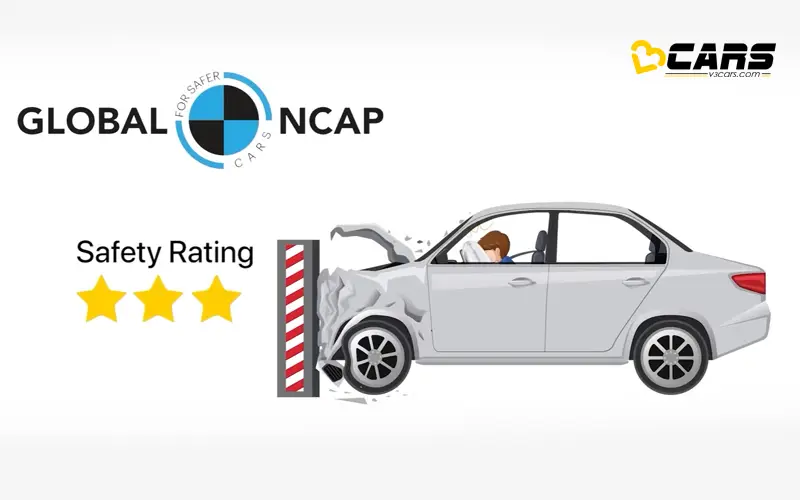
In the front crash test, the car is crashed into a deformable barrier with a slight overlap at a speed of 64 km/h. This test analyses the safety of both the child and adult occupants. It simulates a situation where the car collides with another vehicle while trying to avoid the collision.
Side Impact Crash Test
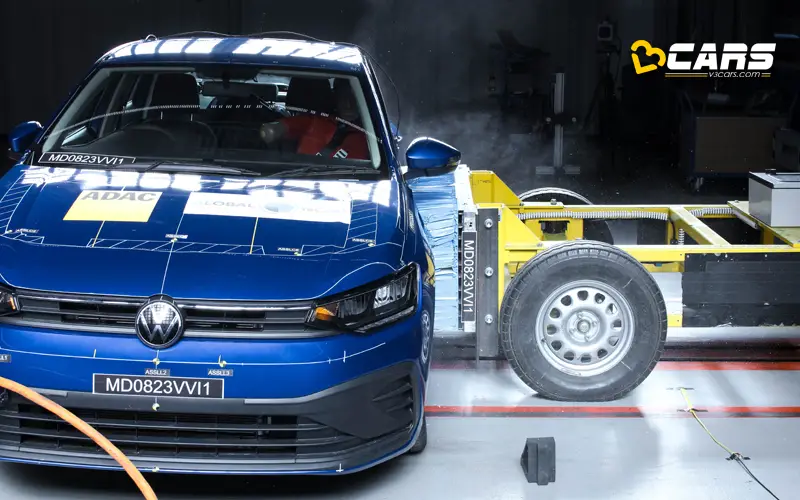
In the side impact test, the car is stationary and is hit by a deformable car frame at a speed of 50 km/h. This test depicts a situation where the car is involved in a side collision with another car at a crossroad. Only the safety results of the front driver are recorded in this test.
Pole Impact Crash Test
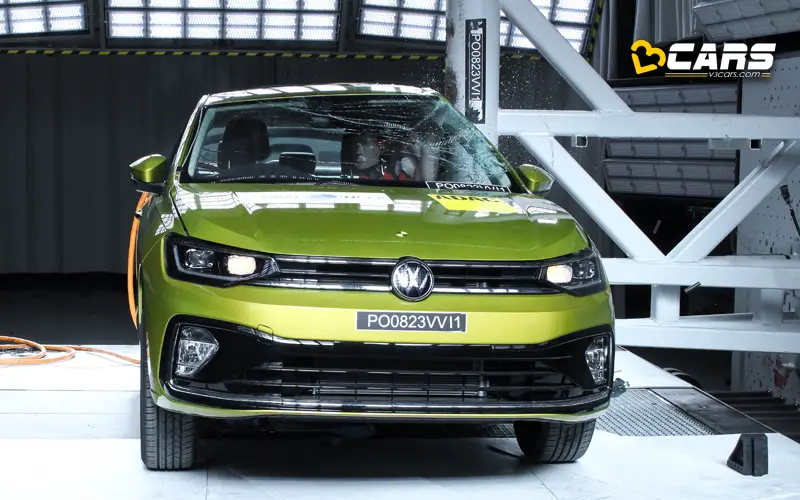
Lastly, in the pole impact test, the car is placed on a dolly and crashed into a non-deformable pole at a speed of 29 km/h. This test aims to replicate a situation where the car goes out of control and collides with an electricity or light pole. Only the driver's data is recorded in this test as well.
Frame Stability
The car's platform, frame or chassis plays an important role in any crash. The chassis is developed in a way that it absorbs energy during an accident, ensuring the safety of the occupants. During a crash, if the car hits a barrier, the chassis deforms in a controlled manner as it absorbs the extra energy from the impact. If a car receives a Stable rating in body shell integrity, it means that the passenger compartment remained stable during the crash and it may also be capable of handling forces beyond the test criteria. An Unstable rating can have two meanings:
- The passenger cell passed the standard tests but cannot handle additional force. OR
- The impact caused severe damage with excessive deformations in the passenger cell, and the car couldn't keep the occupants safe according to GNCAP's standard tests.
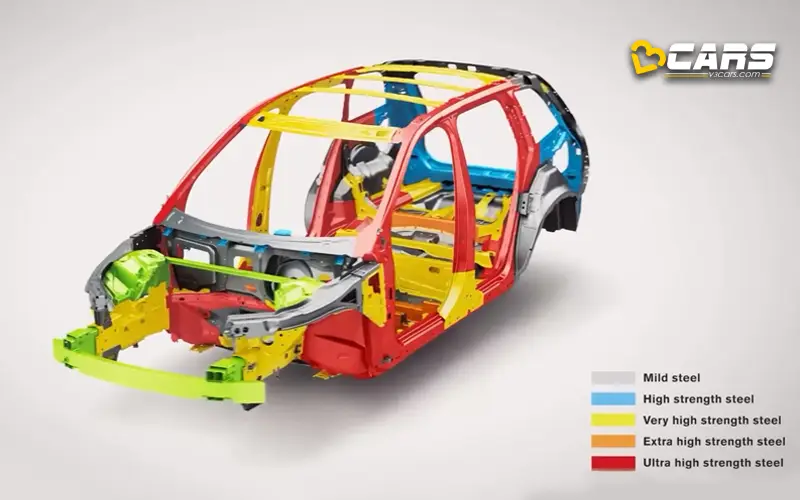
While researching for this video, we noticed an interesting fact in GNCAP's data. Although they recently started conducting pole impact tests, some cars have not undergone this test. Initially, we thought it could be related to chassis stability, assuming that cars with unstable chassis might have skipped the pole impact test. However, we couldn't find any consistent patterns around it. If you have any information on this matter, please share it with us at editor@v3cars.
Now, let's take a closer look at GNCAP's safety ratings.
Safety Rating - GNCAP
GNCAP rates cars based on the number of stars they receive. The more stars a car gets, the safer it is considered to be. There is a rating for adult occupants sitting in the front seat and a separate child safety rating for occupants in the second row. GNCAP introduced new testing processes starting from July 2022. The last car to be tested using the old method was the Kia Carens. Previously, only the behaviour of cars in frontal impacts was observed, but according to the new tests, cars are now rated based on both front and side impacts, in addition to active safety features.
Adult occupant protection is based on a total of 34 points according to the new GNCAP protocols. Here’s a table with adult safety scores and star ratings for all the cars tested with the new process:
|
|
||||
|
|
|
|
|
|
|
|
|
|
|
|
|
|
|
|
|
|
|
|
|
|
|
|
|
|
|
|
|
|
|
|
|
|
|
|
|
|
|
|
|
|
|
|
|
|
|
|
|
|
|
|
|
|
|
|
|
|
|
|
|
|
|
|
|
|
|
|
|
|
|
|
Colour Coding
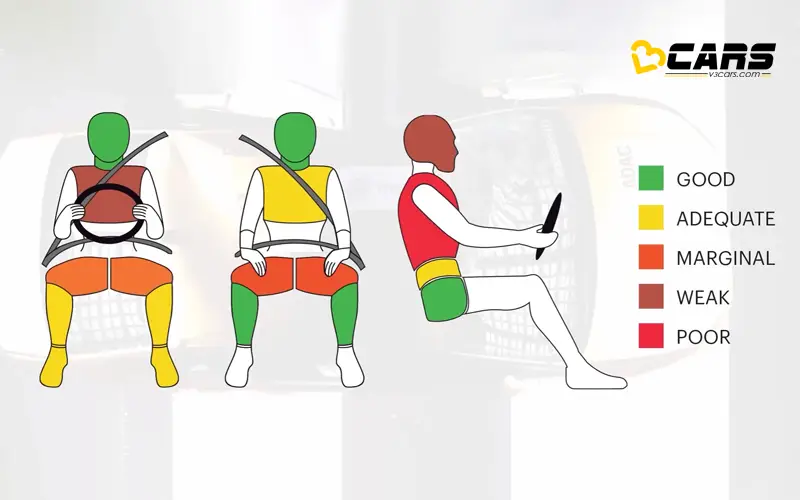
In addition to star ratings, GNCAP also represents the extent of damage to different body parts of the dummies using colours. A figure is used to denote this information. Five colours are used for this purpose: Green signifies complete safety, yellow denotes acceptable, orange represents marginal, brown indicates weak, and red signifies poor. In other words, if a particular body part is marked with red, it is considered the most unsafe, while green represents the safest condition.
The important point to note here is that while GNCAP's data allows us to understand which car is relatively safer or less safe compared to others, accurately predicting the level of injury that occupants may sustain in a specific crash test rating, to the extent of being fatal, is challenging. There are additional limitations in the GNCAP data, which we will cover further in our Safety Beyond Stars series.
Note: Instantly Sell Your Old Car With V3Cars Sell Used Car Platform
Note: Now Find Out The Fuel Price In India Using V3Cars


please put the reference links.